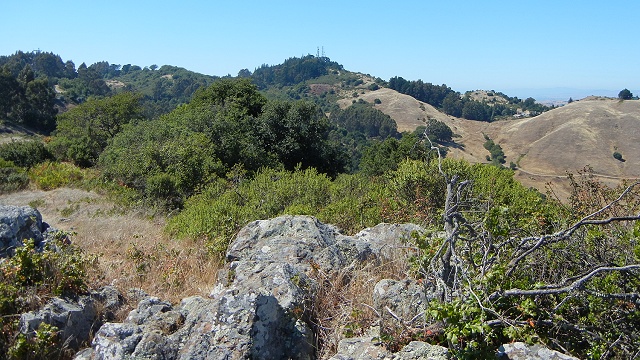
Lately I’ve been enjoying the special qualities of my local watershed lands. They’re interesting because even though our watersheds aren’t wildernesses, they have many wilderness qualities. Watershed land is put to work in the way that land works best: as a combination of soil and ecosystems that collects rain and preserves it as high-quality water. If humans have to make land useful—and no question about it, we must so we can stay alive and thriving—then using it to turn rain into clean drinking water instead of floods is a scheme that ranks right up there with spinning straw into gold. It’s like keeping part of the land certified-organic, free of pesticides and other pollution. Most Bay Area water agencies allow us carefully limited access to enjoy these clean working spaces for what they are.
Our watersheds may look pristine, but they’re carefully managed. The hillsides are mowed, grazed and burned under careful monitoring. The ecosystem of the 19th century, with its elk herds and grizzlies and wolves, is long gone. But the sight of grassy slopes with their wooded creases in rain and sun remains a year-round feast for the eyes.
Reservoirs themselves are totally artificial, of course; they’re more like tanks than lakes. They have steep and jagged shorelines, and their water levels swing wildly over the course of the year. Many reservoirs also serve as aquariums, regularly stocked with sport fish that anglers pay to come and catch. Reservoir water still needs to be processed, in tanks, with chemicals. But the sight of water reacting to wind is still an inexhaustible blessing.
Watershed lands aren’t destinations, like state or national parks. Their natural features aren’t unusual, and to me that’s a key part of their charm: they are indigenous landscapes that help me paint a mental picture of the original land that underlies everything we’ve built on top of it.
Here’s a quick look at the possibilities, from north to south. I’m focusing mainly on hiking trails, but boating and horseback riding are other common activities on watershed lands.